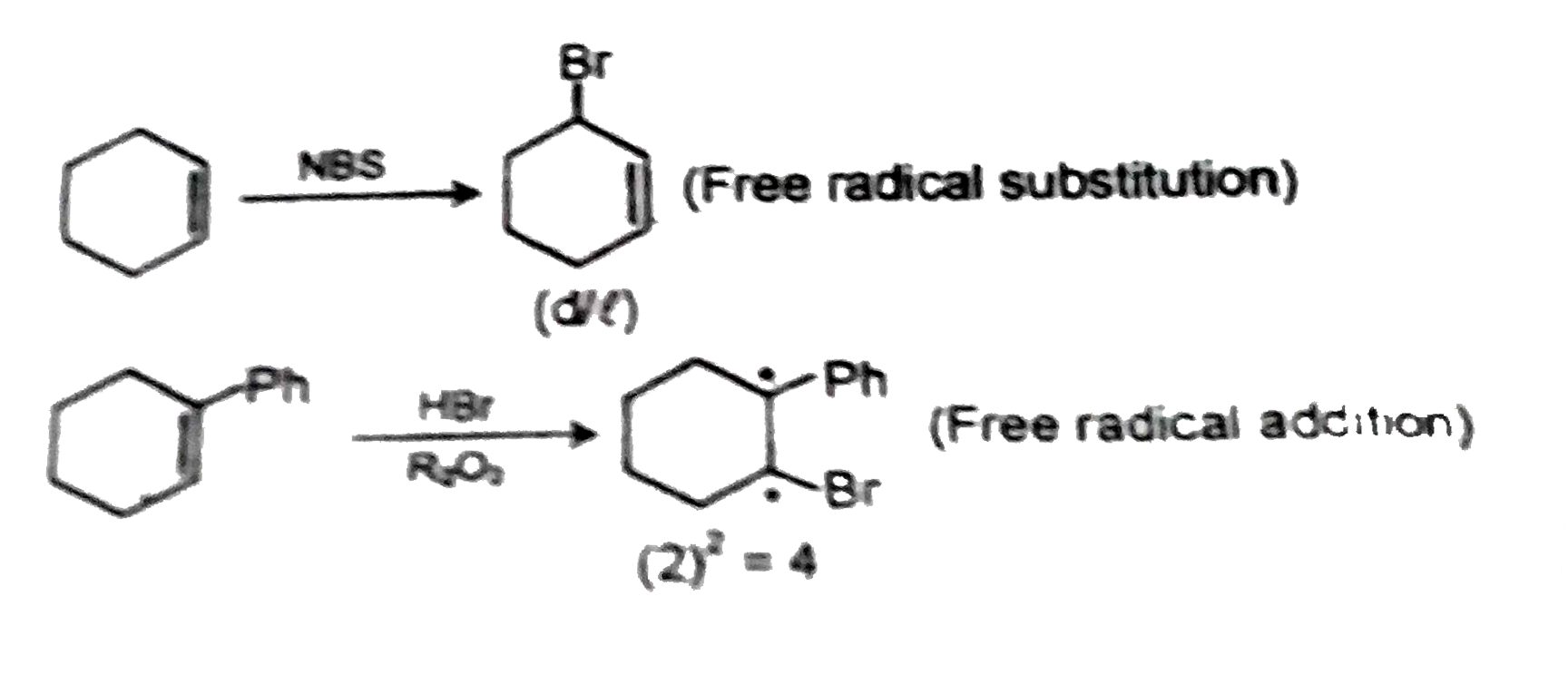When nucleophile encounters a ketone site of attack is
The correct Answer is:A
Topper's Solved these Questions
Similar Questions
Knowledge Check
When a nucleophile encounters a ketone, the site of attack is :
Athe carbon atom of the carbonylBthe oxygen atom of the carbonylCboth the carbon and oxygen atoms, with equal probabilityDno attack occurs as ketones do not react with nucleophilesAmongst the following, which are true for SN2 reaction ? (i) The rate of reaction is independent of the concentration of the nucleophile. (ii) The nucleophile attacks the carbon atom on the side of the molecule opposite to the group being displaced. (iii) The reaction proceeds with simultaneous bond formation and bond rupture.
A(i), (ii)B(i), (iii)C(i), (ii), (iii)D(ii), (iii)
A nucleophilic reagent is
View SolutionIn aldehydes and ketones
View SolutionEster gives nucleophilic addition reaction followed by elimination reaction with carbon nucleopile. When carbon nucleophile is of an ester then the reaction is known as Claisen condensation reaction. This reaction is also carried out between ester and a ketone. A suC Cessful Claisen condensation requires an ester with two α− hydrogens and an equivalent amount of base rather than a catalytic amount of base.
Intramolecular Claisen condensation given diester is known as :
View SolutionAldehyde and ketones are specially susceptible susceptible to nucleophile addition because carbonyl group
_E01_578_Q01.png) (due to electronegatvity different between carbon and oxygen).
(due to electronegatvity different between carbon and oxygen).
_E01_578_Q02.png)
Positive charge on carbon makes it reactive towards the nucleophile. This addition is catalysed by acid. Reactivity of carbonyl compound towards nucleophilic addition increases in the electron deficience at carbonyl carbon. Thus, (-I.E.) group increase while (+I.E.) groups decrease the reactivity of carbonyl compound
Which of the following is most reactve to give nucleophilic addition?
View SolutionAldehyde and ketones are specially susceptible susceptible to nucleophile addition because carbonyl group
_E01_579_Q01.png) (due to electronegatvity different between carbon and oxygen).
(due to electronegatvity different between carbon and oxygen).
_E01_579_Q02.png)
Positive charge on carbon makes it reactive towards the nucleophile. This addition is catalysed by acid. Reactivity of carbonyl compound towards nucleophilic addition increases in the electron deficience at carbonyl carbon. Thus, (-I.E.) group increase while (+I.E.) groups decrease the reactivity of carbonyl compound
Carbonyl compounds show nucleophilic addition with:
View SolutionAldehyde and ketones are specially susceptible susceptible to nucleophile addition because carbonyl group
_E01_581_Q01.png) (due to electronegatvity different between carbon and oxygen).
(due to electronegatvity different between carbon and oxygen).
_E01_581_Q02.png)
Positive charge on carbon makes it reactive towards the nucleophile. This addition is catalysed by acid. Reactivity of carbonyl compound towards nucleophilic addition increases in the electron deficience at carbonyl carbon. Thus, (-I.E.) group increase while (+I.E.) groups decrease the reactivity of carbonyl compound
Select the least reactive carbonyl compound for nucleophilic addition:
View Solution

